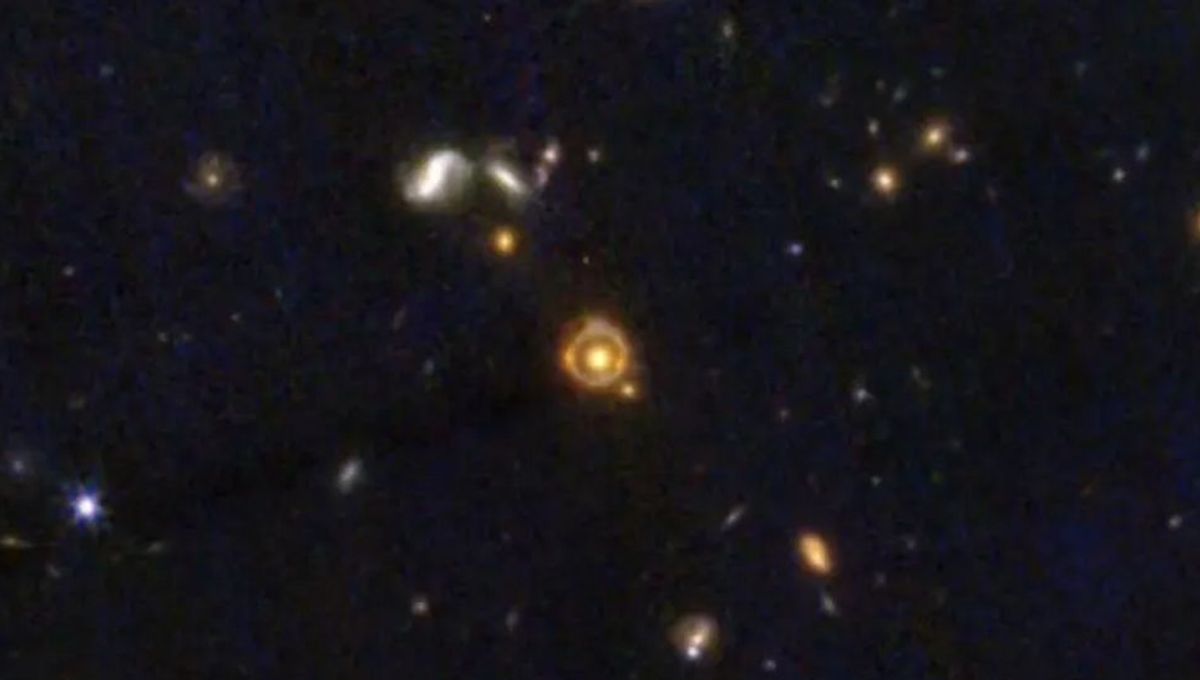
Astronomers found an incredible cosmic object in the data from JWST, and they stumbled upon it without a particularly systematic search. In the exquisite observations from the space telescope, there was this beautiful image of galaxy JWST-ER1. And it truly is a beauty.
The object is a gravitational lens. This means that the galaxy’s mass is so high in such a relatively small volume that space-time becomes really warped. This impressive curvature creates a lens, just like the glass ones a person might use. But instead of magnifying something small around you, this gravitational lens is magnifying a galaxy that is even further away than JWST-ER1.
And JWST-ER1 is pretty far away. Its light has traveled for 10.3 billion years to reach us. If this is confirmed, it makes JWST-ER1 the most distant gravitational lensing object yet. It is a special type of lens, as the background object (whose light comes from 11.5 billion years ago) is right behind it, creating a full circle around JWST-ER1. This effect is known as an Einstein ring.
The Einstein ring in question is not just very pretty. It is also useful for studying the matter content of these galaxies. According to our best theory of the universe, the matter that we can see in the cosmos is outweighed five-to-one by an invisible substance that only interacts through gravity. This is known as dark matter.
Gravitational lenses are a perfect object to study dark matter, given their influence, and they might reveal that something is missing. By looking at the light of these stars, the team has estimated that in total they weigh about 110 billion times the mass of the Sun. The galaxy is quite a compact object despite its mass, something that the Hubble Space Telescope had already recognized in a class of galaxies.
These compact objects are very dense and already have half the mass that they will acquire over the course of the universe’s age. The rest of the mass will come from collisions with much smaller galaxies over the following 10 billion years.
Hence the idea they form inside-out: first the core, and then the accumulation of the outskirts. Dark matter doesn’t clump, so it is more spread out in standard models used to estimate it in galaxies. In this case, within the Einstein ring, there should be 260 billion solar masses worth of dark matter.
These are truly astronomical numbers, but the Einstein ring provides an independent measure of the matter in there, and that number is even bigger. There should be 650 billion times the mass of the Sun in matter – so where is the missing 280 billion? Astronomers are not sure. There could be more dark matter, or there might be more stars.
The team commented that the object was “found by eyeballing the wonderful COSMOS-Web data,” so it will be interesting to see what future focused searches might find in similar objects.
The research has been accepted for publication in Nature Astronomy and is available on the ArXiv.
Source Link: Most Distant Gravitational Lensing Galaxy Reveals A Perfect Einstein Ring